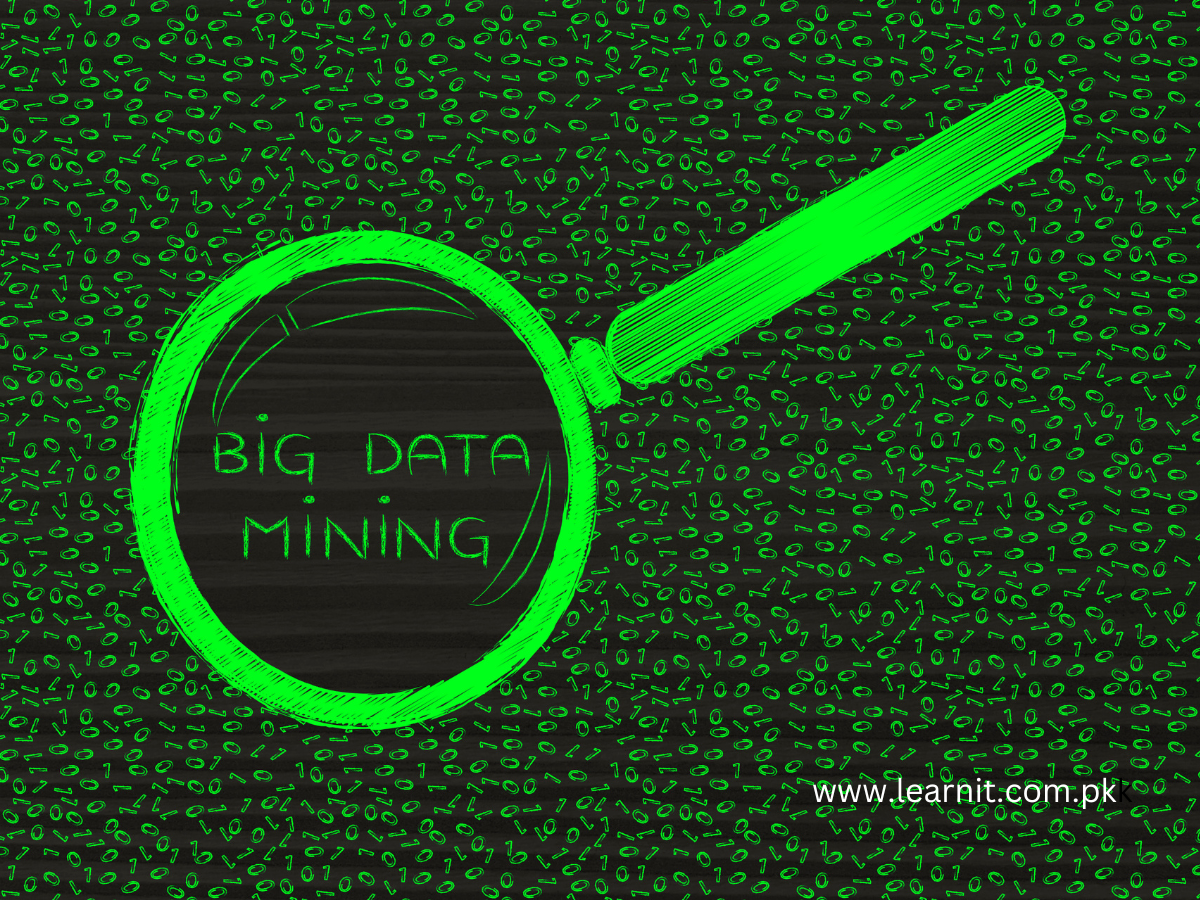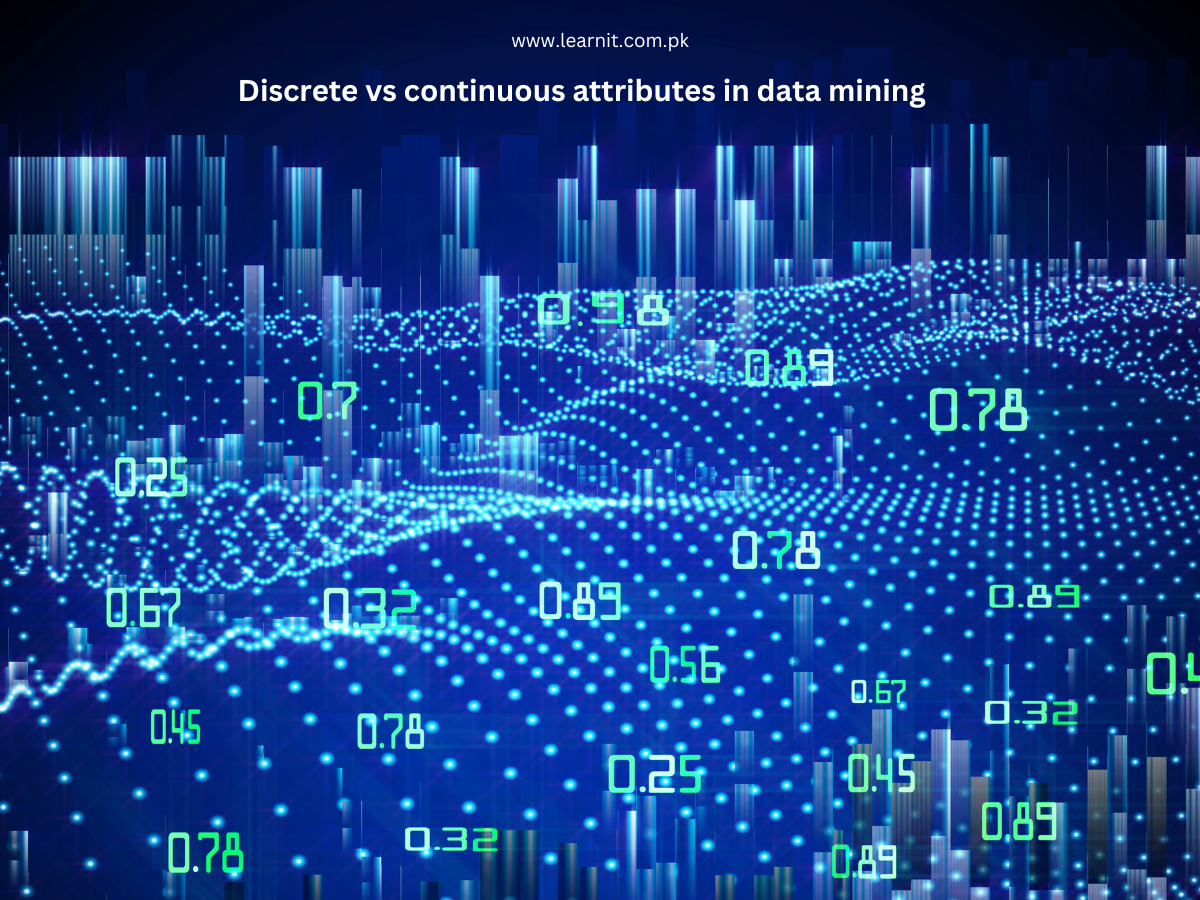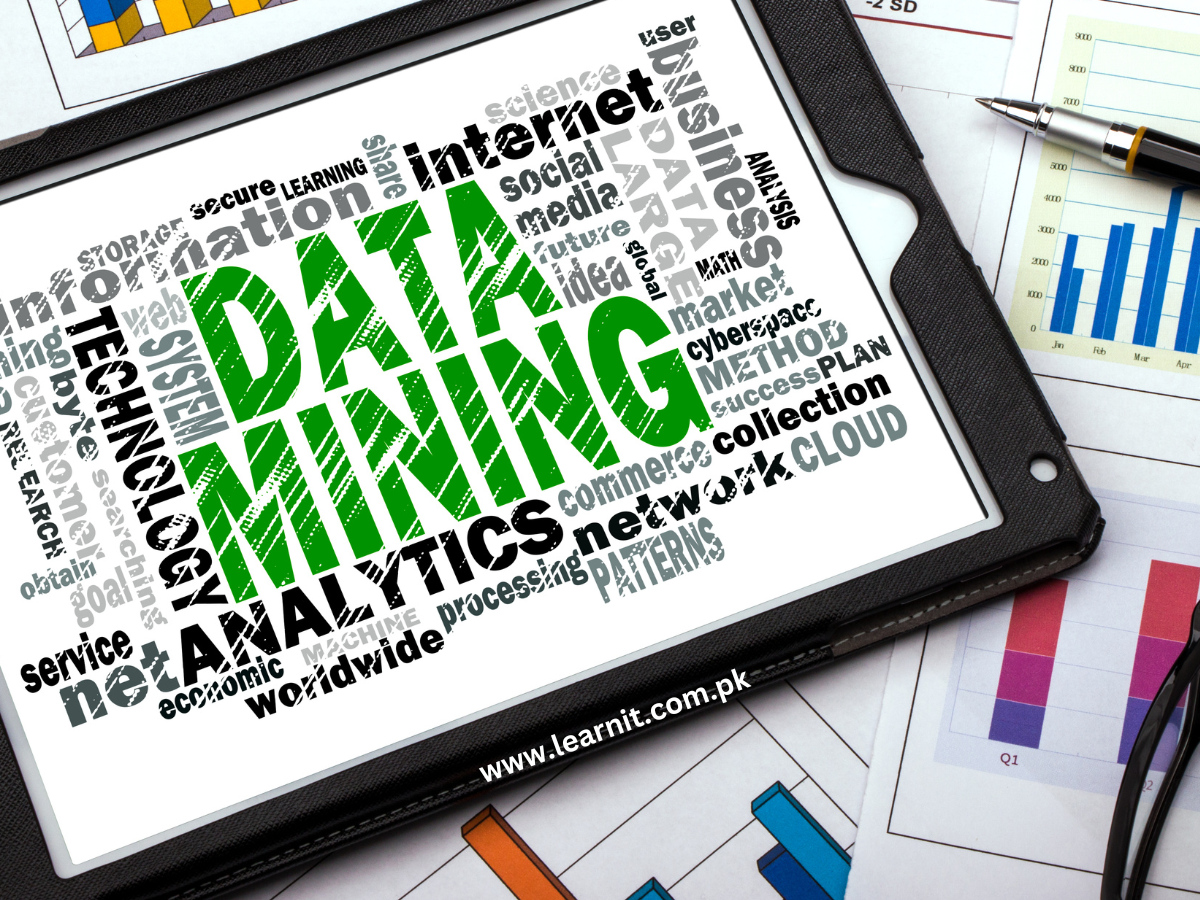Data objects in data mining | Real life examples

Data Objects:
Data objects in data mining are individual units or entities within a data set that contain information and attributes for analysis and exploration. These objects could be customers, products, transactions, events, or any other entities of interest. Data mining techniques aim to discover patterns, associations, and relationships within data objects to gain valuable insights. Let’s explore 20 real-life examples of data objects and their applications in diverse domains:
Customer Data Object in E-commerce:
- Attributes: Customer ID, Age, Gender, Location, Purchase History.
- Application: E-commerce companies analyze customer data objects to personalize product recommendations and optimize marketing campaigns.
Patient Data Object in Healthcare:
- Attributes: Patient ID, Medical History, Diagnosis, Treatment, Vital Signs.
- Application: Hospitals use patient data objects to track medical records, monitor health progress, and provide personalized care.
Product Data Object in Retail:
- Attributes: Product ID, Category, Price, Inventory Level, Sales Performance.
- Application: Retailers analyze product data objects to identify top-selling items, optimize pricing, and manage inventory efficiently.
Transaction Data Object in Banking:
- Attributes: Transaction ID, Date, Amount, Account Details, Transaction Type.
- Application: Banks use transaction data objects to detect fraudulent activities and monitor account activities.
Flight Data Object in Aviation:
- Attributes: Flight Number, Departure Time, Arrival Time, Destination, Passenger Count.
- Application: Airlines analyze flight data objects to optimize flight schedules, improve operational efficiency, and enhance customer experience.
Sensor Data Object in IoT:
- Attributes: Sensor ID, Reading, Timestamp, Location, Environmental Conditions.
- Application: Internet of Things devices use sensor data objects to monitor and control various parameters in smart homes and industrial settings.
Social Media Data Object in Marketing:
- Attributes: User ID, Social Media Posts, Likes, Shares, Comments.
- Application: Marketing agencies analyze social media data objects to gauge customer sentiments, measure brand engagement, and assess campaign performance.
Student Data Object in Education:
- Attributes: Student ID, Grades, Attendance, Courses Taken, Extracurricular Activities.
- Application: Educational institutions use student data objects to evaluate academic performance, identify learning gaps, and plan personalized education plans.
Crime Data Object in Law Enforcement:
- Attributes: Crime ID, Date, Location, Suspect Information, Type of Crime.
- Application: Law enforcement agencies analyze crime data objects to identify crime patterns, allocate resources, and enhance public safety.
Web Clickstream Data Object in Digital Marketing:
- Attributes: Session ID, Website Pages Visited, Clicks, Referral Source.
- Application: Digital marketers use web clickstream data objects to optimize website design, analyze user behavior, and improve conversion rates.
Health Record Data Object in Medical Research:
- Attributes: Patient ID, Medical History, Genetic Data, Treatment Outcomes.
- Application: Medical researchers use health record data objects to study disease trends, treatment effectiveness, and genetic factors.
Vehicle Data Object in Automotive Industry:
- Attributes: Vehicle ID, Make, Model, Year, Mileage, Fuel Efficiency.
- Application: Automotive companies analyze vehicle data objects to predict maintenance needs, optimize production, and enhance vehicle performance.
Financial Market Data Object in Trading:
- Attributes: Stock Symbol, Price, Volume, Market Indices, Economic Indicators.
- Application: Financial traders use market data objects to identify trends, predict stock movements, and make informed investment decisions.
Social Network Data Object in Networking:
- Attributes: User ID, Connections, Friendships, Network Metrics.
- Application: Social network analysis uses social network data objects to study relationship patterns, influence, and information flow.
Real Estate Property Data Object in Property Management:
- Attributes: Property ID, Address, Size, Rental Income, Property Features.
- Application: Real estate companies use property data objects to manage rental properties, assess investment opportunities, and set rental rates.
Environmental Data Object in Environmental Studies:
- Attributes: Location, Environmental Parameters (Temperature, Humidity, Pollution), Time.
- Application: Environmental scientists use environmental data objects to study climate change, air quality, and ecosystem health.
Insurance Policy Data Object in Insurance Industry:
- Attributes: Policy ID, Coverage Type, Premium, Claims History, Policyholder Information.
- Application: Insurance companies analyze policy data objects to assess risk, set premium rates, and process claims efficiently.
Website User Data Object in User Experience Optimization:
- Attributes: User ID, Session Duration, Browsing Behavior, Conversion Rate.
- Application: User experience designers analyze website user data objects to improve website usability and enhance user satisfaction.
Movie Data Object in Entertainment Industry:
- Attributes: Movie Title, Genre, Release Date, Box Office Revenue, Reviews.
- Application: Movie studios use movie data objects to analyze box office performance, gauge audience preferences, and plan movie releases.
Climate Data Object in Climate Studies:
- Attributes: Location, Temperature, Precipitation, Wind Speed, Climate Patterns.
- Application: Climatologists use climate data objects to study weather patterns, track climate change, and predict extreme events.

Energy Consumption Data Object in Energy Management:
- Attributes: Location, Energy Consumption, Time of Use, Energy Efficiency.
- Application: Energy companies use energy consumption data objects to optimize energy distribution, manage peak loads, and promote energy conservation.
Employee Data Object in Human Resources:
- Attributes: Employee ID, Job Title, Performance Ratings, Training History.
- Application: Human resources departments use employee data objects to assess performance, identify talent gaps, and plan career development.
Sensor Data Object in Environmental Monitoring:
- Attributes: Sensor ID, Environmental Parameters (Air Quality, Water Quality), Location.
- Application: Environmental monitoring agencies use sensor data objects to track pollution levels, monitor natural resources, and enforce environmental regulations.
Social Services Data Object in Government:
- Attributes: Recipient ID, Social Services Received, Income Level, Family Size.
- Application: Government agencies use social services data objects to assess social welfare programs’ effectiveness and allocate resources efficiently.
Social Influence Data Object in Social Sciences:
- Attributes: Individual ID, Social Influence Metrics, Behavior Adoption.
- Application: Social scientists use social influence data objects to study behavior diffusion, social networks’ impact, and collective decision-making.
Stock Keeping Unit (SKU) Data Object in Inventory Management:
- Attributes: SKU ID, Product Description, Stock Levels, Sales Velocity.
- Application: Retailers use SKU data objects to manage inventory, optimize stock replenishment, and avoid stockouts.
Weather Forecast Data Object in Meteorology:
- Attributes: Location, Weather Predictions, Confidence Levels, Timeframe.
- Application: Meteorologists use weather forecast data objects to provide accurate and timely weather predictions for public safety and planning.
Crime Incident Data Object in Community Policing:
- Attributes: Incident ID, Type of Crime, Time, Location, Offender Description.
- Application: Community policing initiatives use crime incident data objects to engage with communities, address local concerns, and prevent crime.
Social Media Influencer Data Object in Digital Marketing:
- Attributes: Influencer ID, Followers Count, Engagement Metrics, Niche Market.
- Application: Brands use social media influencer data objects to identify potential partners for influencer marketing campaigns.
Web Log Data Object in Website Analytics:
- Attributes: Log ID, Website Page Access, IP Address, User Agent.
- Application: Website owners use web log data objects to analyze website traffic, user behavior, and page performance for website optimization.
These examples demonstrate the wide range of data objects used in data mining across various industries and domains. By analyzing these data objects, businesses, researchers, and organizations can gain valuable insights that lead to more informed decision-making and improved processes.
FAQs:
What is an example of a data object?
A data object is a unit of data that represents a single item or concept. It can take various forms depending on the context, such as a variable in a programming language, a record in a database, a file on a computer, or an entry in a spreadsheet. Here’s an example of a data object in a few different contexts:
Programming: python# Example of a data object in Python person = { "name": "John Doe", "age": 30, "occupation": "Software Engineer" }
Database:
Consider a database table called “Employees” with the following data object:
Employee ID FirstName LastName Department Salary
1 John Smith Engineering 80000
File:
Suppose you have a JSON file containing information about a book:
json
Copy code{ "title": "The Great Gatsby", "author": "F. Scott Fitzgerald", "year": 1925, "genre": "Fiction" }
Spreadsheet:
Imagine you have a spreadsheet with a row representing a product:
ProductID ProductName Price Quantity
101 Widget A 10.99 500
In each of these examples, the data object encapsulates information related to a specific entity (person, employee, book, product) and contains relevant attributes (name, age, department, etc.). It’s important to note that the structure and format of data objects can vary depending on the specific use case and the technology being used.
What is data objects and attribute types in data mining?
Data Objects:
Data objects, also known as instances or examples, are the individual units of data that are being analyzed in a data mining task. These objects can represent real-world entities, such as customers, products, transactions, etc. In the context of data mining, data objects are often represented as vectors, where each element of the vector corresponds to an attribute (feature) of the object. Data mining algorithms use these objects to uncover patterns, relationships, and insights from the data.
For example, in a customer analysis task, each customer could be represented as a data object, with attributes such as age, income, purchase history, and more.
Attribute Types: Attribute types define the nature and characteristics of the attributes associated with data objects. Different types of attributes can represent different kinds of information, and understanding the attribute types is crucial for selecting appropriate data mining techniques and preprocessing the data.
Common types of attributes in data mining include:
Categorical Attributes:
These attributes represent categories or labels. Examples include “gender,” “product type,” or “city.”
Numerical Attributes:
These attributes represent numerical values and can be continuous (e.g., height, temperature) or discrete (e.g., number of items sold).
Ordinal Attributes:
These attributes have a specific order or ranking. For example, a survey response scale like “low,” “medium,” and “high” represents an ordinal attribute.
Binary Attributes:
These attributes can take only two values, typically representing yes/no or true/false conditions.
Textual Attributes:
These attributes contain free-form text data, such as product descriptions or customer reviews.
Date/Time Attributes: These attributes represent date and time values, which are common in time-series analysis or event data.
When performing data mining, understanding the types of attributes is essential for selecting appropriate data preprocessing techniques (e.g., handling missing values, normalization) and choosing the right algorithms for the specific task at hand (e.g., clustering, classification, regression).
What are the various data objects?
In data mining, data objects represent individual entities or instances that are being analyzed. The types of data objects you encounter depend on the specific application and the domain you’re working in. Here are some common types of data objects encountered in data mining:
Customers: In marketing and customer analytics, each customer is a data object. Attributes could include demographics (age, gender, location), purchase history, and preferences.
Products: When analyzing sales data or performing market basket analysis, products can be data objects. Attributes might include product category, price, and sales volume.
Patients: In healthcare and medical data analysis, patients can be data objects. Attributes might include medical history, test results, and diagnoses.
Transactions: In retail and finance, individual transactions can be data objects. Each transaction might have attributes like purchase date, items bought, and transaction amount.
Documents: In text mining and natural language processing, documents (such as articles, emails, or social media posts) can be data objects. Attributes might be the words or phrases contained in the documents.
Web Pages: In web mining and search engines, web pages can be data objects. Attributes might include keywords, links, and page content.
Sensor Readings: In IoT (Internet of Things) applications, sensor readings from devices can be data objects. Attributes might include temperature, humidity, and location.
Social Network Users: In social network analysis, individual users or profiles can be data objects. Attributes might include connections, interests, and activity.
Images: In image analysis and computer vision, images can be data objects. Attributes might include pixel values, color information, and shapes.
Time Series: In time-series analysis, data objects are sequences of measurements taken over time. This could be used in finance for stock prices, in meteorology for weather data, or in manufacturing for production metrics.
What is the difference between data object and data element?
The terms “data object” and “data element” are related concepts in the context of data representation, but they have distinct meanings:
Data Object: A data object is a higher-level entity that represents a single item or concept, often composed of multiple data elements. Data objects are the units of analysis in many data-related tasks, including data modeling, database design, and data mining. A data object can be thought of as a collection of attributes or properties that describe a specific entity or instance.
Example: In a customer database, each customer record is a data object. It could include attributes such as customer ID, name, address, and phone number. The entire customer record, with all its attributes, is the data object.
Data Element:
A data element, on the other hand, is a basic unit of data representation. It is the smallest indivisible unit of data in a dataset or information system. Data elements are the building blocks used to define the structure of a data object. They represent individual properties or characteristics of a data object.
Example:
Continuing with the customer database, the individual attributes within a customer record, such as “customer ID,” “name,” “address,” and “phone number,” are data elements. Each data element provides specific information about the customer, and together, they form the structure of the data object (the customer record).
In summary, a data object is a higher-level entity that encompasses multiple data elements, which are the individual pieces of data used to describe the attributes or properties of the object. Understanding the distinction between data objects and data elements is important when designing data structures, working with databases, and conducting data analysis.





